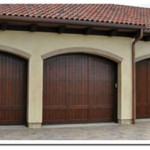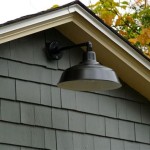How to Repaint a Concrete Garage Floor
A freshly painted garage floor enhances the appearance and protects the concrete from stains, chemicals, and wear. This article provides a comprehensive guide to repainting a concrete garage floor, ensuring a durable and attractive finish.
1. Preparing the Concrete Surface
Proper surface preparation is crucial for paint adhesion and longevity. Begin by thoroughly cleaning the floor to remove dirt, grease, oil, and any existing paint chips. A strong degreaser and a stiff-bristled brush are recommended for this step. For stubborn grease stains, a poultice of absorbent material soaked in a degreaser can be applied and left overnight.
After cleaning, address any cracks or imperfections in the concrete. Minor cracks can be filled with a concrete patching compound, following the manufacturer's instructions. Larger cracks or damage may require professional repair. Allow the patching compound to dry and cure completely before proceeding.
The next step involves etching the concrete surface to improve paint adhesion. This can be achieved by using a concrete etching solution, available at most hardware stores. Follow the product instructions carefully, ensuring proper ventilation and safety precautions. After etching, rinse the floor thoroughly with water and allow it to dry completely, typically for 24 to 48 hours.
2. Choosing the Right Paint
Selecting the appropriate paint is essential for a successful outcome. Epoxy-based paints are highly recommended for garage floors due to their durability, chemical resistance, and ability to withstand heavy traffic. They are available in one-part and two-part formulas, with two-part epoxies offering superior durability. Acrylic latex paints are another option, providing a more affordable and easier-to-apply alternative, though they are generally less durable than epoxy.
Consider the desired finish when choosing the paint. Epoxy paints are available in high-gloss, semi-gloss, and satin finishes, while acrylic latex paints typically offer a satin or matte finish. High-gloss finishes are easier to clean but may show imperfections more readily. When selecting a color, consider the overall aesthetic of the garage and the level of visibility desired.
3. Applying the Paint
Before applying the paint, ensure the garage is well-ventilated and the temperature is within the recommended range specified by the paint manufacturer. Mask off any areas that should not be painted, such as walls or baseboards. If using a two-part epoxy, mix the components according to the manufacturer's instructions, ensuring thorough blending.
Begin painting in a corner of the garage, working in manageable sections. A roller with a nap appropriate for concrete surfaces is recommended for even coverage. Apply thin, even coats, allowing each coat to dry completely before applying the next. For epoxy paints, the recommended drying time between coats can be several hours or even overnight. Follow the manufacturer's instructions for specific drying times.
For optimal durability, apply at least two coats of paint. For areas subject to heavy traffic or potential spills, a third coat may be beneficial. After the final coat has dried thoroughly, typically for 24 to 72 hours depending on the paint type, the garage floor can be used cautiously. Avoid placing heavy objects or driving vehicles on the newly painted surface for the full cure time recommended by the manufacturer, which can be several days or even a week.
4. Maintaining the Painted Floor
Regular cleaning will help maintain the appearance and prolong the life of the painted floor. Sweep or vacuum the floor regularly to remove dirt and debris. Clean up spills promptly using a mild detergent and water. Avoid using harsh chemicals or abrasive cleaners, which can damage the paint finish. For stubborn stains, consult the paint manufacturer's recommendations for appropriate cleaning methods.
Periodically inspect the painted surface for any signs of wear or damage. Address any chips or cracks promptly to prevent further deterioration. Touch-up paint can be used for minor repairs, following the same application procedures as the initial painting.
By following these steps and using quality materials, a durable and attractive finish can be achieved, enhancing the functionality and aesthetics of the garage space.

How I Painted My Concrete Garage Floor Before After True Value

How To Paint A Garage Floor Clean And Scentsible

How To Paint Garage Floor Regal Paints Industrial Protective Ltd

How To Paint A Garage Floor Clean And Scentsible

How I Painted My Concrete Garage Floor Before After True Value

Painting Your Garage Floors Do S Dont Making Pretty Spaces Blog

How To Paint Your Garage Floor Premium Paints Limited

Why Concrete Staining Is Perfect For Your Garage Trico Painting

How To Paint A Garage Floor Project Summary Bob Vila

How To Paint Concrete Flooring Moving Com
Related Posts








